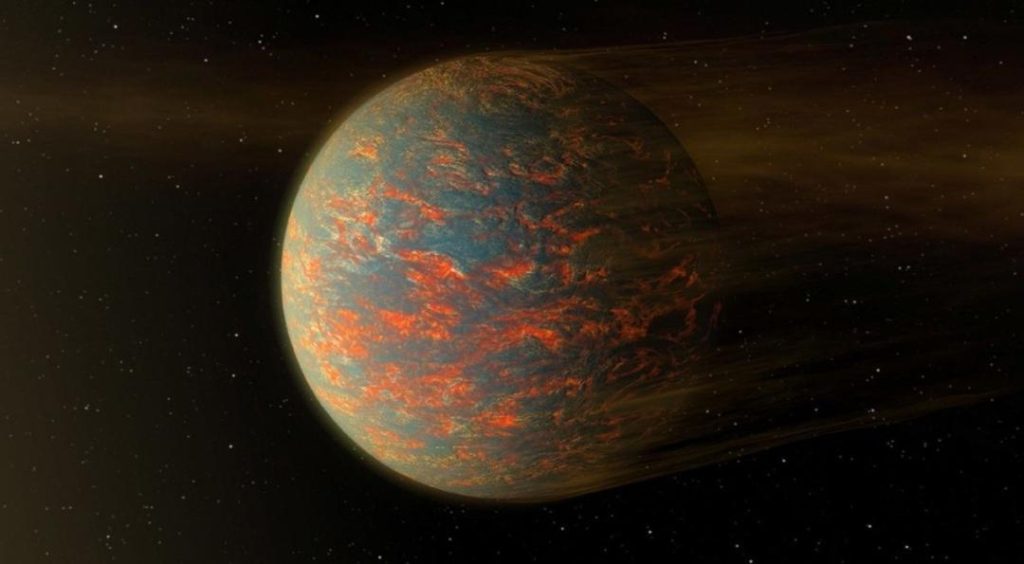
Newly-Discovered Super-Earth Heats Up & Freezes Every 300 Days
The discovery of exoplanets has been a significant area of research in the field of astronomy in recent years. With the help of advanced telescopes and detection methods, scientists have been able to find planets orbiting stars other than the Sun. One of the most recent discoveries is a super-Earth that is orbiting a Sun-like star just 20 light-years from Earth. This newly-discovered planet is unique in its extreme climate, swinging from scorching hot to freezing cold every 300 days.
A super-Earth is a planet that is bigger than Earth but smaller than the gas giants, Neptune and Uranus. The newly-discovered super-Earth, which has been named K2-141b, is a fascinating find for scientists. Its unique orbit is responsible for the extreme temperature fluctuations it experiences.
K2-141b orbits its star in an oval shape, which means that its distance from the star varies throughout the year. When the planet is closer to the star, it experiences extreme heat, with surface temperatures reaching as high as 3,000 degrees Fahrenheit (1,600 degrees Celsius). This heat is intense enough to melt metal, making it one of the most extreme environments in the known universe.
However, as the planet moves further away from the star, it experiences a dramatic cooling effect. The surface temperature drops to as low as -200 degrees Fahrenheit (-130 degrees Celsius), making it one of the coldest places in the universe. This extreme temperature fluctuation occurs every 300 days, making it a unique and fascinating phenomenon.
The discovery of K2-141b was made possible by the Kepler space telescope, which was launched in 2009. The Kepler telescope is designed to detect the subtle dimming of a star’s light as a planet passes in front of it. By analyzing the data collected by the telescope, scientists can determine the size and shape of the orbit of the exoplanet.
The star that K2-141b orbits is a Sun-like star, meaning it is a G-type main-sequence star. This type of star is similar to the Sun and is expected to have a similar lifespan. The star is about 20 light-years from Earth, making it relatively close to our planet.
The discovery of K2-141b is significant not only because of its unique climate but also because it provides insights into the formation and evolution of planets. The extreme temperature fluctuations on K2-141b suggest that the planet may have formed in a different way than other planets in our solar system.
“We are excited to have discovered a new world that is so different from our own,” said Dr. Vanessa Bailey, a scientist at NASA’s Ames Research Center. “The extreme climate on K2-141b is a reminder that there is still so much to learn about the universe and the planets that inhabit it.”
The discovery of K2-141b also raises questions about the possibility of life on the planet. While the extreme temperatures make it unlikely that life as we know it could exist on the surface, it is possible that life could exist in the form of microorganisms in the planet’s subsurface.
The discovery of K2-141b is a significant milestone in the search for exoplanets and the study of planetary formation and evolution. As scientists continue to study this unique planet, they may uncover new insights into the nature of the universe and the possibility of life beyond Earth.






